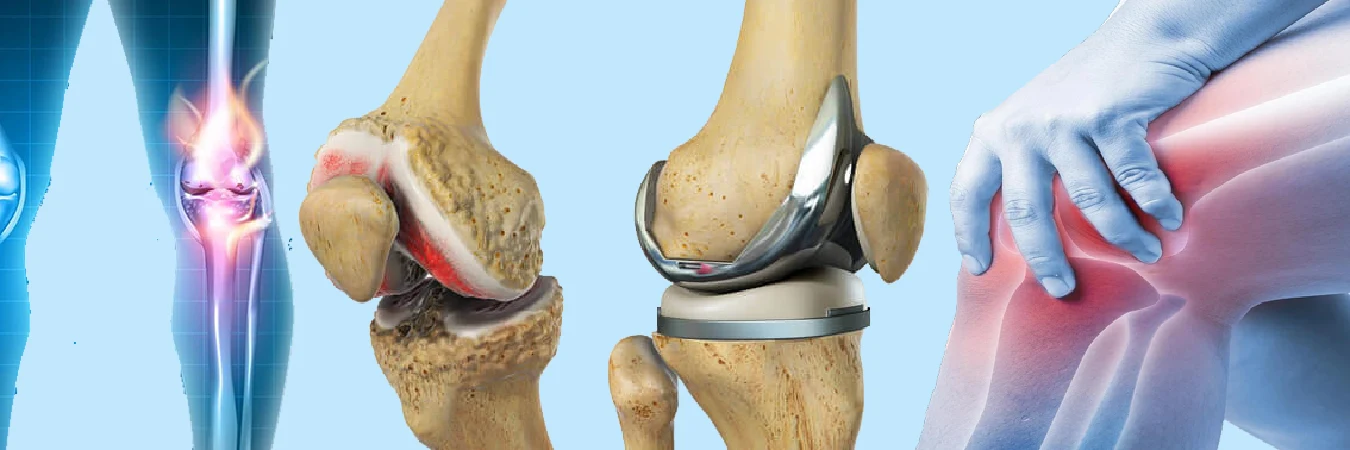Knee Replacement
Diagnosis:
Physical Examination: The process begins with a thorough physical examination by an orthopedic specialist. They assess the knee joint's pain, function, and other symptoms to understand the extent of the problem.
Medical History: A detailed discussion of the patient's family and medical history is conducted. This helps in determining the underlying causes of the knee condition and ensures a comprehensive approach to treatment.
Diagnostic Imaging: Various diagnostic imaging tests, such as X-rays and MRIs, may be recommended. These tests help in assessing the extent of knee joint dysfunction and provide valuable information for planning the surgical procedure.
Procedure of Knee Replacement Surgery:
Anesthesia: Knee replacement surgery can be performed under either general anesthesia, which puts the patient to sleep, or spinal anesthesia, which numbs the lower part of the body. The choice of anesthesia depends on the patient's health and the surgeon's preference.
Incision: A surgical incision is made on the front of the knee, often around the kneecap area. In minimally invasive procedures like arthroscopy, this incision is relatively smaller compared to traditional surgery.
Joint Access: The surgeon carefully exposes the knee joint by moving aside or removing the kneecap, depending on the specific surgical technique used.
Removal of Damaged Tissues: The damaged parts of the knee joint, including the damaged cartilage and bone, are removed. This is done to prepare the joint for the placement of the knee prosthesis (artificial joint).
Prosthesis Placement: The knee prosthesis, typically made of metal, plastic, or a combination of both, is positioned in the knee joint. A special bone cement may be used to secure the prosthesis to the bones.
Spacer: A plastic spacer is often placed between the components of the knee implant to act as a cartilage substitute and reduce friction during joint movement. This helps improve the joint's smooth function.
Wound Closure: Once the prosthetic components are in place and the joint is properly aligned, the surgeon closes the surgical wound. This can be done using sutures or clips.
Blood Transfusion: In many cases, knee replacement surgery does not require blood transfusions because it is minimally invasive and results in very little bleeding. However, blood transfusions may be necessary in specific situations, depending on the patient's health and the extent of the surgery.
After the surgery, patients typically go through a period of rehabilitation and physical therapy to regain strength and mobility in the knee. The ultimate goal is to alleviate pain, improve knee function, and enhance the patient's overall quality of life. The success of the procedure depends on various factors, including the surgeon's experience, the patient's overall health, and the commitment to post-operative rehabilitation.

